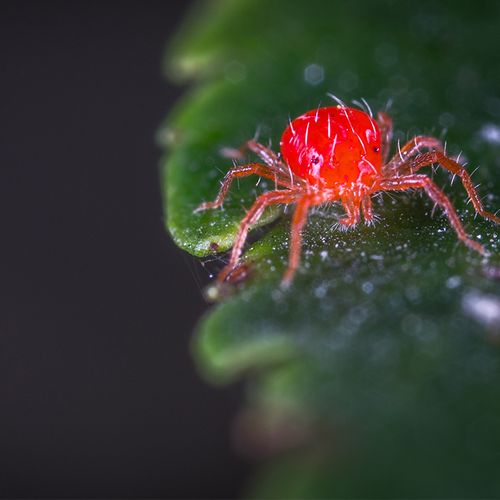It's not just your imagination—allergies have been on the rise. Epidemiological data show that your children are likely to have more allergies than you, and their children to have more yet...and this doesn't just include those who are allergic to peanuts. Dust mites have become a common cause of year-round allergy symptoms, with one study reporting that 51% of children tested positive for dust mite allergies, compared with just 39% of their parents.
Dust mites are common-in fact, nearly ubiquitous. These unwelcome houseguests can be found everywhere—they were even detected on the Mir Space Station. Unless your furnishings are brand-new, you can be fairly certain that some are living in your mattress, carpet and living room couch. Expert Matthew J. Colloff, PhD, author of Dust Mites, a book that delivers all the dirt on these nasty little creatures-including where they live, why people are allergic to them and, most important, how to get rid of them-helped explain the implications.
Dust mites cause damage way out of proportion to their microscopic size. At least 100 million people worldwide suffer from sneezing, runny noses, asthma, skin rashes and other reactions to these mighty mites. Relatives of the spider, dust mites thrive in warm, dark and humid conditions, burrowing deep into rugs, upholstered furniture, bedding, mattresses, box springs and stuffed animals. They feed on the shedded skin of humans and pets and on bacteria and molds-all common components of house dust.
Disgusting Things In Dust
In fact, it's not house dust that most people are allergic to, but rather what dust mites have contributed to it. Specifically, dust mite allergies are immune system reactions to the various dust mite proteins including in their feces and in the decaying bits of dead dust mites. Dr. Collof explains…
- For people with hay fever or allergic rhinitis, the immune reaction to dust mites is likely to present as inflammation in their nasal passages, triggering symptoms such as sneezing, congestion, a runny nose, red and watery eyes, itchy nose and roof of the mouth or throat, coughing and facial pressure or pain.
- If you have asthma, exposure to the mites may produce inflammation and contraction of the airways of your lungs, leading to wheezing. shortness of breath and chest tightening.
- If you are prone to skin rashes, your encounter with dust mites might bring on an inflammatory skin reaction, such as eczema.
Declare War On Dust Mites
For people with severe allergies, drugs may be essential (especially for people with asthma), but avoiding the mite allergens can prevent symptoms from occurring in the first place. The best strategy is to declare war on house dust and the critters that feast on it. Keep your home clean and dust-free, and do whatever you can to keep humidity low. The most critical room of all is your bedroom. Specifically, focus on your bed, which with its mattress, box spring, pillows and cozy quilt or duvet-provides an ideal nesting place for literally millions of microscopic pests.
Debug Your Bedding
Dr. Colloff has developed a "flexible, simple, inexpensive and integrated dust mite control strategy." Depending on how aggressive you want or need to be, Dr. Colloff advises…
- Encase your bed and its components in microporous (or semipermeable) covers, which discourage dust mites from colonization This type of bedding-allergy pillows, pillow covers, mattress covers, duvet covers, etc.ranges widely in price (from $50 to several hundred dollars for a mattress cover, for instance) and is readily available online if you can't find it in local stores.
- A more moderate strategy is to strip your bed daily. Also helpful is to open doors and windows to thoroughly air the room.
- At the very least, consider washing bedding in hot water (at least 130°F) at least once a month.
Note: There are allergy-relief laundry soaps/ detergents that work in cold water. It's also great to dry items outdoors, in direct sunlight, which dehydrates and kills dust mites.
Floors & Furniture
To deal with dust mites in rugs and upholstery, Dr. Colloff recommends...
- Removing carpeting and rugs from bedrooms—this is the most aggressive strategy.
- Vacuuming carpets, upholstered furniture and curtains every week, using a device with a double-layered microfilter bag or a HEPA (high-efficiency particulate air) filter. This is a less extreme plan.
- Regularly steam-cleaning rugs, upholstered furniture and mattresses with equipment that heats water to at least 212°F, to help ensure removal of dust and dust mites.
Note: These strategies were adapted from Dr. Colloff's Dust Mites.
A Note Of Caution
Many people assume that they are allergic to dust mites, observes Dr. Colloff, but this is not always the case. Before you invest significant time and money to control dust mites, see an allergist to make sure you actually are allergic to them. If you are, then take aggressive steps to eliminate them to the greatest extent possible from your home.
Tasty Way to Fight Allergies
In a recent study, it was found that people I who ate seven ounces of broccoli sprouts daily for three days had up to a 200% increase in the production of antioxidant enzymes in the nasal passages. The antioxidants help fight the inflammation that contributes to allergy symptoms. Broccoli sprouts are very high in sulforaphane, which starts a process that leads to the antioxidant increase.
